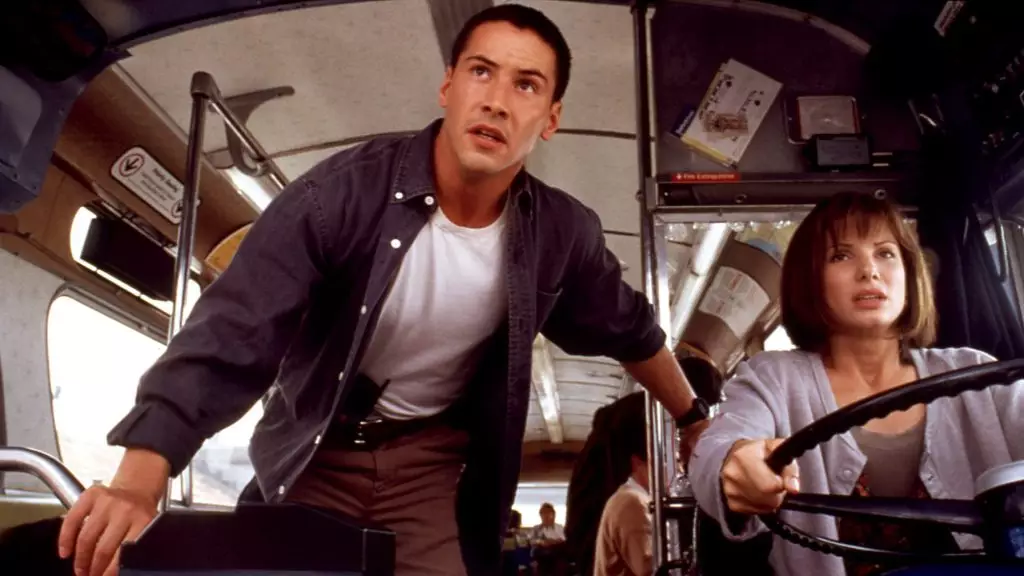The 1994 film “Speed,” directed by Jan de Bont, has transcended its status as a mere action thriller, becoming a cornerstone in the genre. As the film celebrates its 30th anniversary, Keanu Reeves and Sandra Bullock recently relived their memories at Beyond Fest. While the film was celebrated for its meticulously choreographed stunts and heart-racing scenes, both actors candidly addressed a particularly intense experience that left them feeling unprepared. Reeves recalled how, during one shoot, they found themselves genuinely unaware of the extent to which they would be hitting cars. “We were a little under-informed,” he said, bringing to light the unpredictable nature of shooting such high-stakes scenes.
This revelation not only reflects the chaos that usually simmers beneath the surface of cinematic magic but also showcases the unique pressures placed on actors in high-octane environments. They weren’t just performers but also brave navigators through uncharted territories, forced to react in real-time to the unfolding drama—not scripted but however calculated it might seem.
For Bullock, the experience was equally bewildering. Though she humorously pointed out that she had obtained a Santa Monica bus driver’s license, she never actually drove the bus during filming. Instead, she was seated at the helm while a stunt driver operated the vehicle from the roof, directing the bus towards whatever obstacles Jan de Bont deemed necessary for the scene. “It’s not an easy vehicle to maneuver,” she noted, hinting at the challenges that come with portraying an action hero. The psychological aspect of “driving” a bus that is being careened into various objects adds another layer of complexity. The sense of immersion for the actors was palpable, yet they were largely passive participants in a wildly dangerous ballet.
This dynamic—of an actor feeling in control while being anything but—raises questions about the authenticity of performances in action films and the increasingly blurred lines between reality and fiction in high-intensity sequences.
The narrative thread of “Speed” revolves around an LAPD officer, Jack Traven (Reeves), on a race against time to prevent a bomb on a city bus from detonating. Despite its success, the sequel, “Speed 2: Cruise Control,” did not feature Reeves, a choice that has sparked discussions about legacy and continuity in film franchises. Bullock, who reprised her role as Annie Porter, expressed skepticism about future sequels, remarking on the industry’s current willingness to take risks. “It would require a lot from everybody,” she admitted.
The entertainment landscape has shifted significantly since the 1990s, with studios often more focused on franchises that promise guaranteed returns rather than taking creative risks. Bullock’s doubts serve as a commentary on the film industry’s current climate—a marketplace that often prioritizes safe bets over groundbreaking storytelling.
The reunion at Beyond Fest serves as a poignant reminder of the dangers actors face in their pursuit of thrilling narratives and the legacy that iconic films like “Speed” continue to carve out in cinematic history. While the thrills may be manufactured, the emotions they evoke—and sometimes the risks they entail—remain startlingly real.

